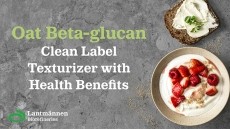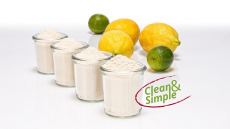Health and prices dominate hydrocolloids debate
discussions at IMR International's Hydrocolloids Conference last
month, mirroring concerns of the food industry at large.
"All the food companies are talking nutrition, health and wellness," IMR's Dennis Seisun told FoodNavigator-USA. "Everyone is interested in 'what's going to make me healthier'." Meanwhile, prices for hydrocolloids, as for most ingredients in the food industry, are likely to increase, according to Seisun, who indicated that many hydrocolloid producers' prices had been driven down below long term sustainability. The price hike in raw materials and energy has driven hydrocolloid prices up and, according to IMR, this has been accompanied by a need for padding margins so as to allow for future investments. The world food hydrocolloid market is valued at $4.2bn, with pectin ($443mn), xanthan ($225mn) and MC/HPMC ($57mn) predicted to experience the fastest growth rate over the next five years (5.7 percent, 5.2 percent and 6.2 percent respectively). The 13th IMR Hydrocolloid Conference was held April 27-29 and, according to organizers, hosted approximately 100 high level executives from the hydrocolloid industry, who traveled to San Francisco from more than 20 countries. With a global focus, the location of the event changes yearly and shifts from North America to Europe. "There is no other conference like this one which focuses on commercial, application and marketing issues," said Seisun. Seisun said the conference was established as a unique networking venue for this industry. "Whilst similar venues for other food ingredients existed … there was no forum for the texture world of food ingredients," said Seisun. According to IMR, key trends identified in the last few conferences continue to dominate discussion. Beyond nutrition and food prices, these include labeling, innovation and safety concerns. The issue of food labeling for the hydrocolloids industry is similar to that for the entire food industry: regulatory environments and health concerns are pushing for more exhaustive labeling, while food companies debate how much information is too much on a label. As a solution to cluttered labels, Seisun said an idea emerging from the conference was the complimentary use of the Internet to add additional information on ingredients where labels fall short. On the issue of innovation, food giant Nestle presented at the San Francisco conference and underscored partnerships between companies with different strengths as the best means of developing new products. Participants witnessed that following food scares and the threat of global terrorism, shipping food ingredients is becoming increasingly difficult and global food distributors will have to play a role in addressing this. In terms of consumer demand, the hydrocolloid industry has been feeling the pressure for natural and organically-derived ingredients and producers will have to follow accordingly.


























